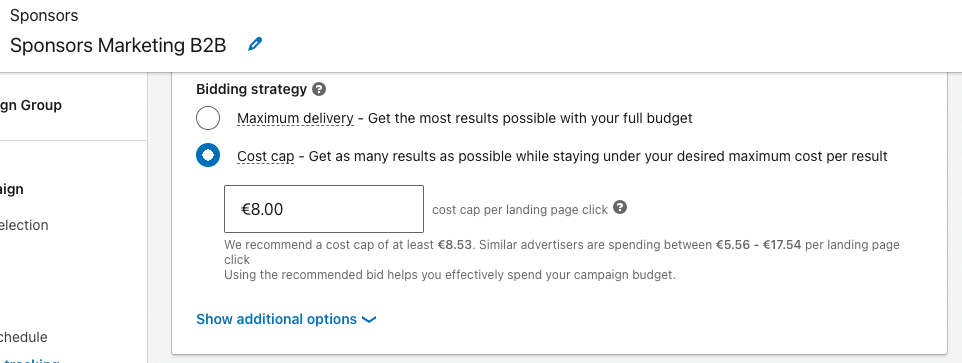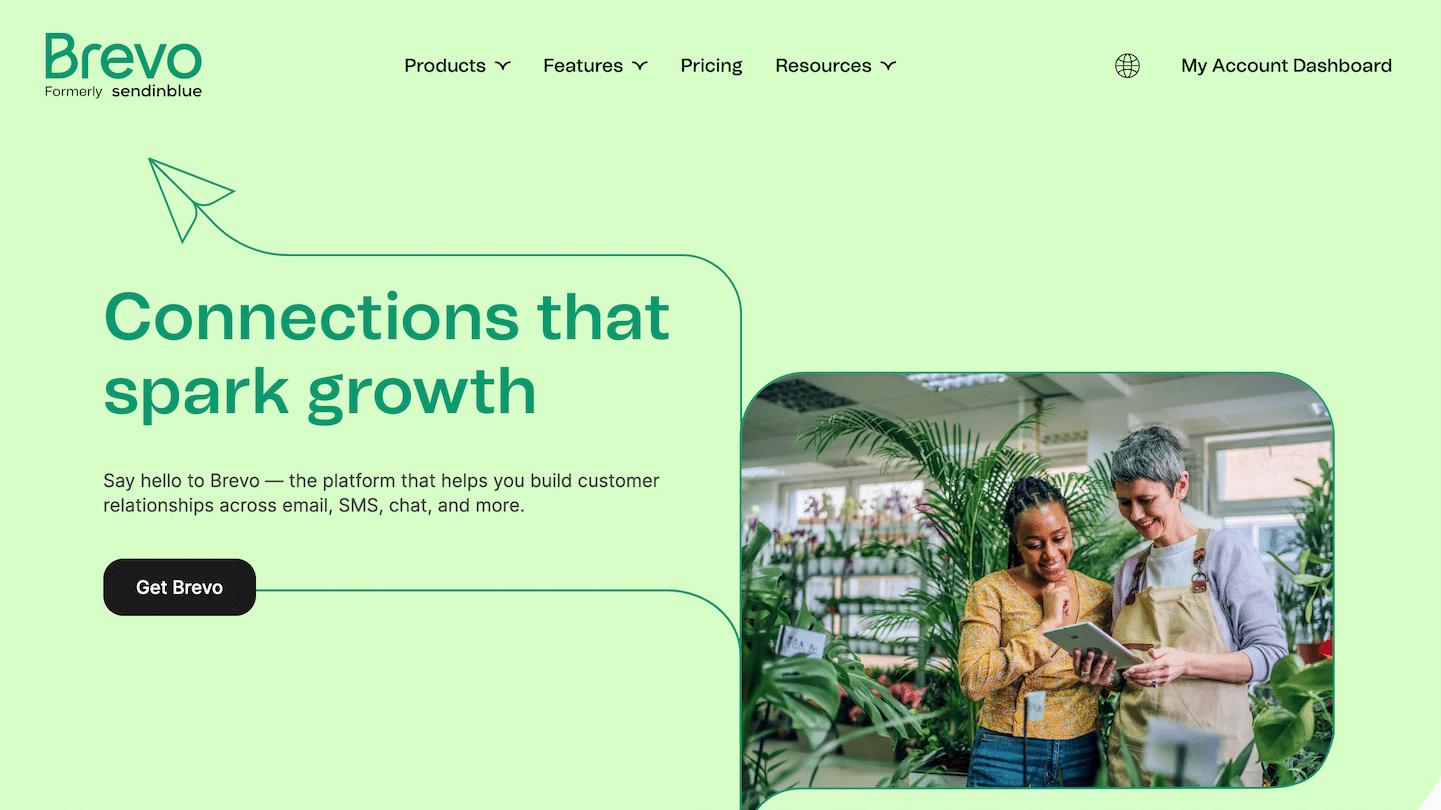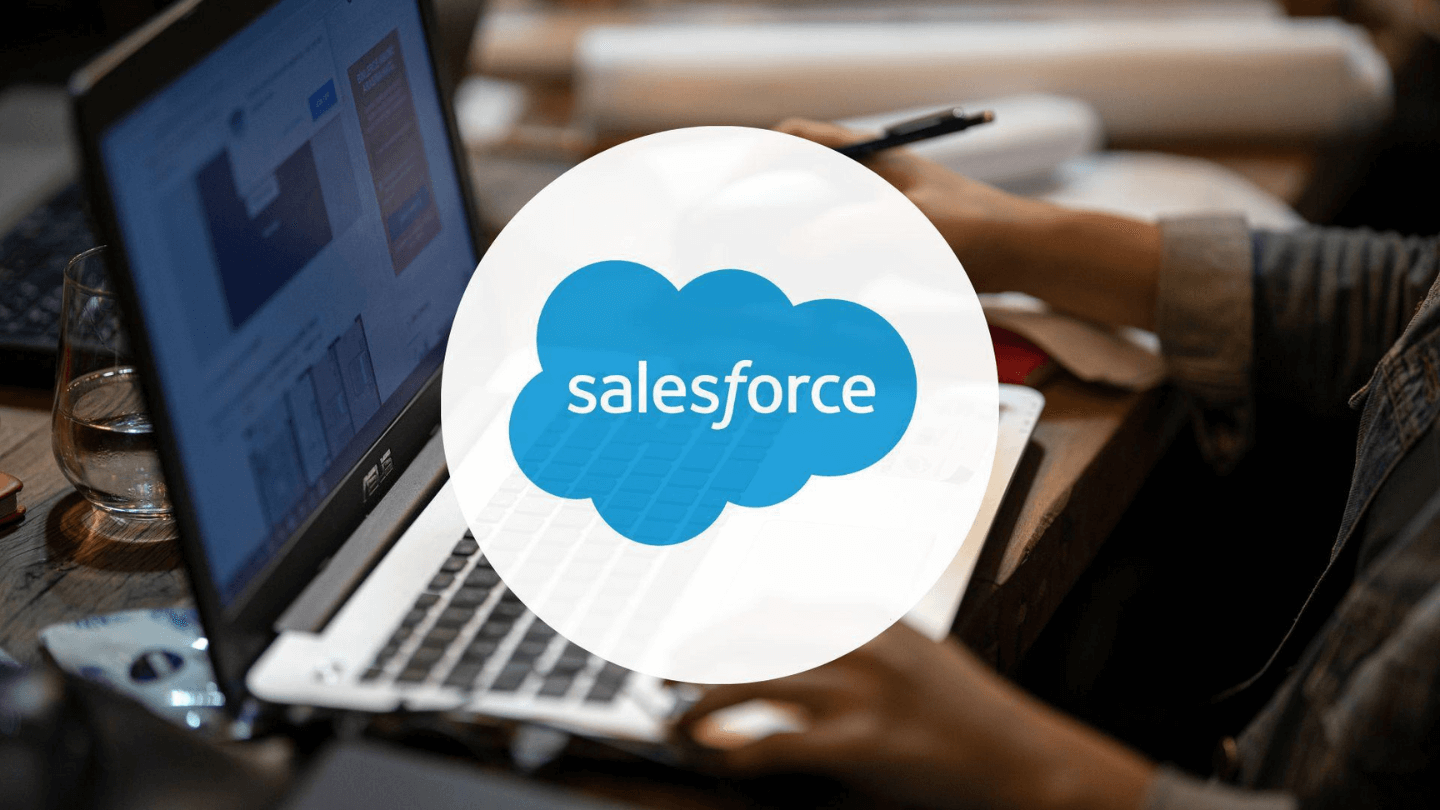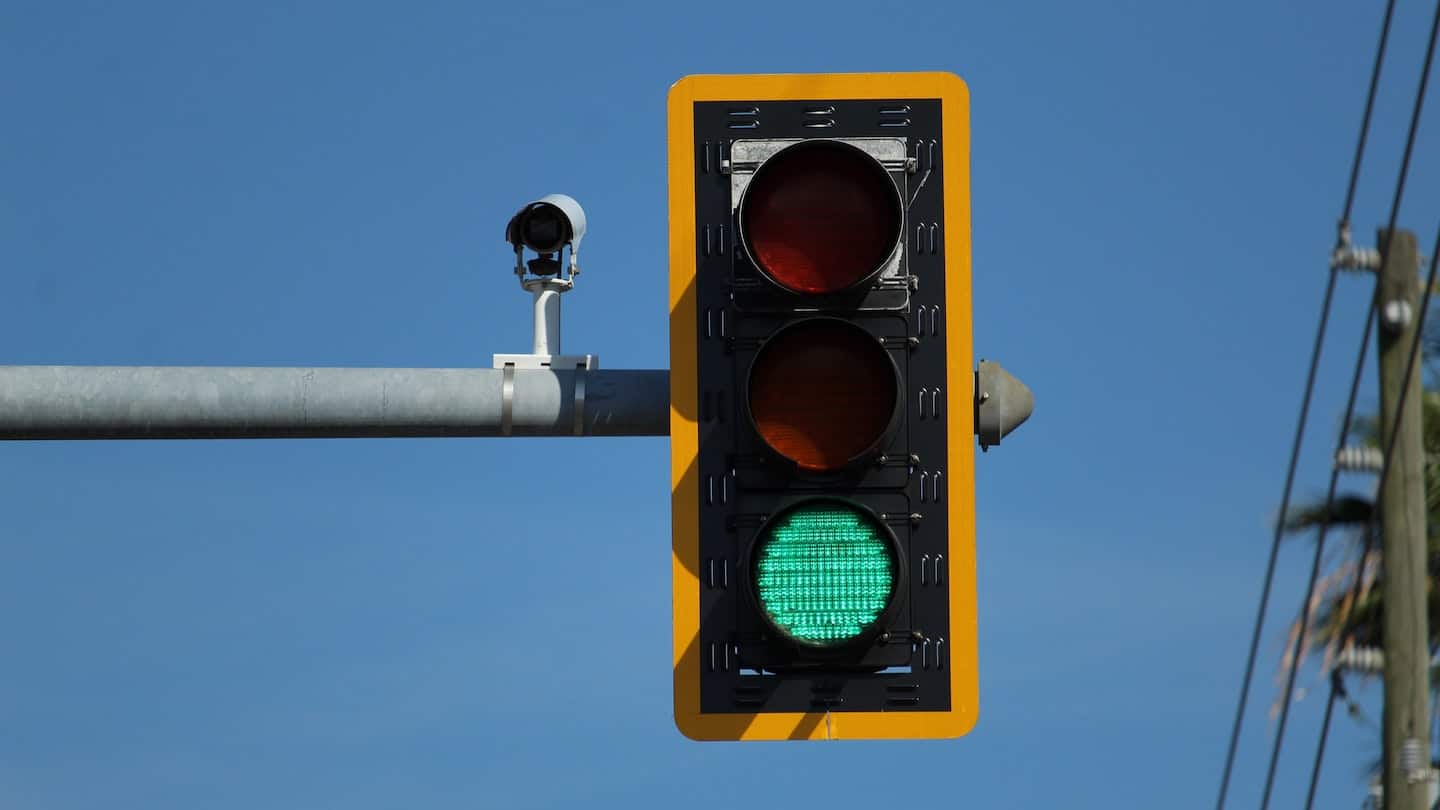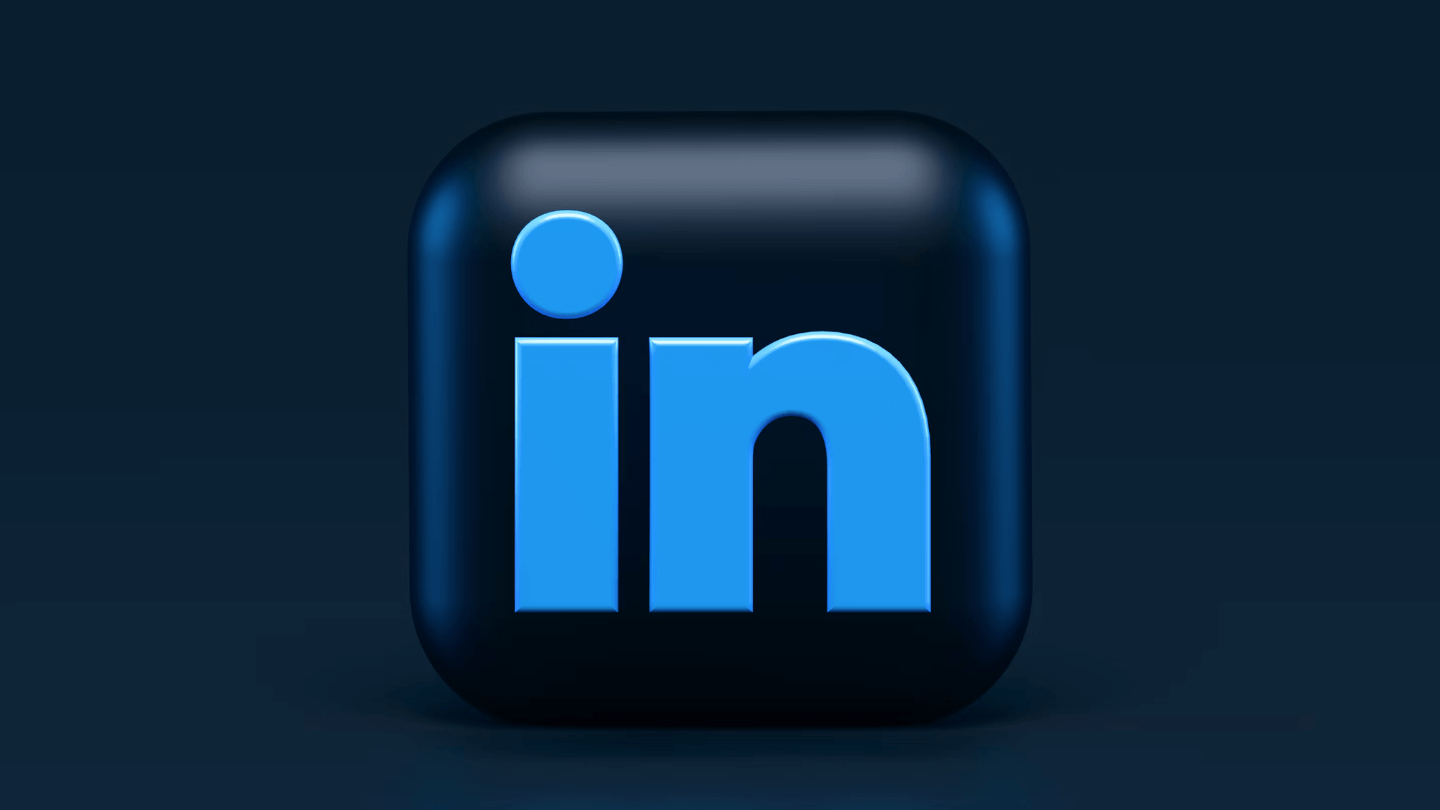Newsletters are a great way to reach new B2B customers and get the word out about your products: not only are you being recommended by a content creator that readers trust, but you’re also reaching a very specific audience.
But a successful newsletter sponsorship campaign requires experience, even expertise, in deciding what type of newsletter interests you, what type of sponsorship, and what budget to devote to it.
In this article, I give you the keys to getting the most out of your newsletter sponsorship campaigns.
Sommaire
4 things to know before sponsoring a newsletter
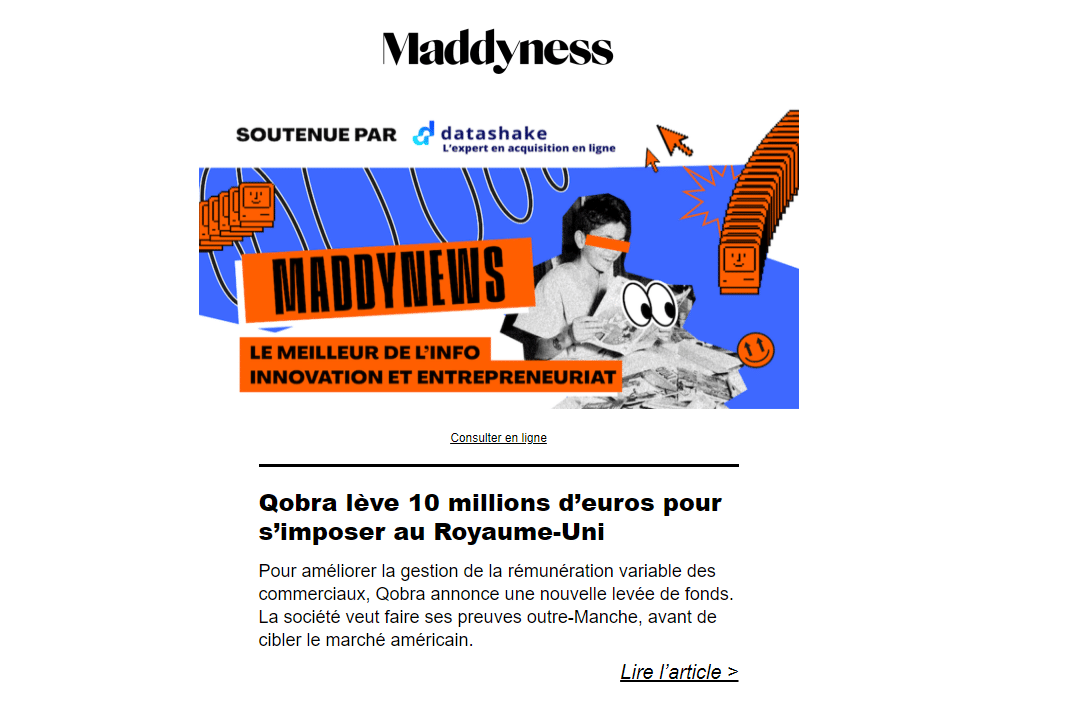
The Maddyness newsletter: a compilation of the week’s articles, sponsored by Datashake
#1 The different types of newsletters
- The newsletter of a pure player
A pure player is a content creator who writes a newsletter on a particular subject. The bond between the creator and his subscribers is very strong, and his newsletter is of very high quality.
Subscribers usually read these newsletters for tips and news. The power of prescription is very strong. These newsletters have open rates of between 50 and 65%.
- A media newsletter
Media newsletters are often compilations of the week’s articles. Subscribers benefit from having important information pushed to their mailboxes, so they can keep an eye on the latest news. These newsletters have open rates of between 20% and 30%.
- Company newsletter
Each company has its own newsletter. Generally, the aim is to send news and new offers to members.
But more and more companies are writing non-promotional newsletters, with content that provides information about the sector, to subscribers who are not (yet) customers.
The aim is to create a community around your sector. These newsletters are similar to “pure player” newsletters. The quality is similar, and so are the opening rates.
Go furtherFor“developers” targeting, for example, you have the following newsletters:
- Pure players: Le courrier du Hacker, Craft Academy
- Media: Développez.com, IT Espresso
- Company: Talent.io, Co-fondateur.fr
#2 Focus on value-added newsletters
Above all, subscribers want to learn more about the subject they are following. To generate more clicks, it’s best to sponsor content that will interest them: Webinar, white paper, blog article, etc.
You can opt for direct sales, but it all depends on the objective: in my tests, my CTR went from 0.25% (direct sales) to 1% (white paper).
In my tests, I used the example of a Spencer direct sales ad in the Emarketing newsletter: 18 clicks for 6,793 impressions, i.e. a CTR of 0.26%.

And we can compare this ad with another Spencer value-added ad in the same Emarketing newsletter: 155 clicks for 16,064 impressions, i.e. a CTR of 1%.

#3 Diversify newsletters and messages
We’re back to the rule of 7: like all communication, it’s important to avoid the “sword in the water” effect.
Whether for acquisition or brand awareness, repeating the message several times, to the same audience, increases campaign performance. It’s better to concentrate several sponsorships on a single campaign, with a strong message or offer, than to sponsor throughout the year in small, ad hoc campaigns.
This means targeting as many newsletters as possible that are read by a specific community, and always offering them new content.
#4 Target small and precise before expanding
If you’re selling an invoicing Saas, start by targeting a newsletter that gives advice to 6,000 SMEs in the digitalization phase(Bravo PME for example), before expanding to newsletters like Forbes, which are read by many companies.
How much does it cost to sponsor a newsletter?
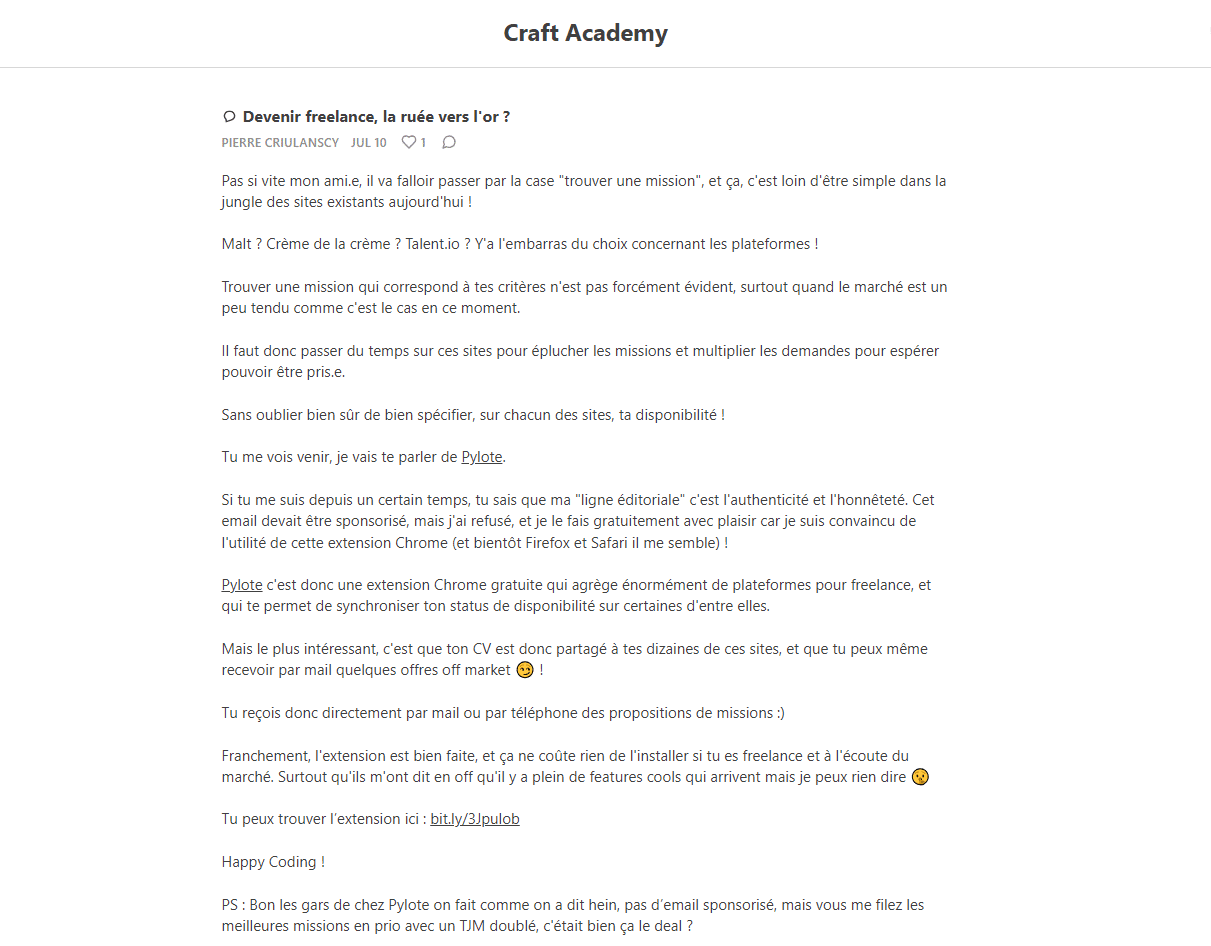
Pierre Criulanscy’s Craft Academy newsletter: over 4,000 subscribers, and a high rate of engagement
Targeting brand awareness or ROI?
To find out whether your campaign is a success, start by defining your objective in advance.
If you’re looking to increase your brand awareness, you need to track the number of impressions. To estimate it, multiply the number of subscribers by the open rate. Then we track openings to monitor actual performance.
To build awareness, we generally avoid multiplying newsletters and concentrate on two or three editions, and we insist on these editions for several weeks/months.
If your primary objective is ROI, it’s best to track the number of leads. This is estimated by multiplying the number of clicks by the LP conversion rate. Then we track conversions to monitor actual performance.
For an effective ROI campaign, it’s best to multiply editions to obtain real click-through rates & conversion rates. We buy learning, a bit like SEA. Once this is done, you can target more precisely and repeat the most profitable operations.
Pricing models
When you sponsor a newsletter, there are different pricing models:
- Flat-rate: this is the most common. For each newsletter, the nature of the sponsorship is defined, and the price announced. It’s a fixed amount that you pay for the service. Advantages: choice of newsletter, guaranteed placement, possibility of having a customized creation, or text written by the newsletter.
- CPM: Advertiser and publisher agree on a rate per 1,000 effective views (opens). It’s a rare occurrence, but it can happen on long-term, high-volume engagements (a bit like a display campaign). Beware, however, that email clients are waging war on open tracking, and the metric is becoming increasingly unreliable.
- CPC: Advertiser and publisher agree on a price per click. It really only makes sense for longer engagements, where you want to leave it up to the publisher to create content and test it to generate performance. The campaign is on autopilot, and the budget is under control. This model is also emerging with newsletter advertising “regies”. We offer CPC at Spencer, for example.
In all cases, the price must take into account a number of criteria:
- Reach: The number of effective readers of the newsletter
- Audience homogeneity: A very precise, homogeneous audience (e.g. CSM in SaaS) is more expensive than a larger, heterogeneous audience (e.g. Marketing).
- Audience quality: An audience with power and money (e.g. managers of limited companies with more than 10 employees) is more valuable than an audience with little power and/or money (e.g. auto-entrepreneurs registered less than 6 months ago).
- Sponsorship location: Not all locations are created equal, and location dictates not only the click-through rate, but also the number of downstream conversions.
The calculation
Publishers generally think in terms of CPM, or even revenue per subscriber, which is the metric closest to their control.
They define this target CPM or price per subscriber according to 3 criteria: awareness, quality, location.
For example:
- Target CPM: 100 euros
- Reach = 10,000 subscribers * 20% open rate
- Rate = Reach / 1000 * CPM
This newsletter, which reaches 10,000 subscribers with a 20% open rate, costs 200 euros for 2,000 impressions.
Let’s take the concrete example of 3 different newsletters:
| Critères | Newsletter 1 | Newsletter 2 | Newsletter 3 |
|---|---|---|---|
| Tarif | 1300€ | 1100€ | 500€ |
| Type de sponsoring | Texte rédigé | Texte rédigé | Native ad |
| Type d'audience | Responsables marketing | CSM de SaaS | Marketing |
| Nombre d'abonnés | 20K | 6K | 60K |
| Taux d'ouverture | 50% | 35% | 20% |
| Impressions | 10 000 | 2 100 | 12 000 |
| CPM | 130€ | 523€ | 41€ |
| Taux de clic | 2% | 3% | 1% |
| Clics | 200 | 63 | 120 |
| CPC | 6,5€ | 17,4€ | 4,1€ |
| Taux de conversion LP | 20% | 40% | 8% |
| Leads | 40 | 25 | 10 |
| CPL | 32,5€ | 44€ | 50€ |
The advertiser, for his part, must assess the interest, according to his objective:
- Brand awareness: how many impressions are possible, for what price, in a newsletter of what prestige.
- ROI: how many possible leads, for what price.
This very schematic example nevertheless shows that you should always carry out your estimates to the end, all the more so if the newsletters you’re targeting are different. In our example, newsletter 2 has extremely high CPM and CPC, but if the conversion estimate is right, it’s more profitable than newsletter 3.
It’s not uncommon to see newsletters that are very niche, very targeted, and therefore very “efficient” – in other words, with very high CPMs but much lower CPLs: the publisher monetizes its audience or community in a very effective way.
Compare Linkedin Ads with newsletter sponsorship:
For LinkedIn Ads, the screenshot below shows that advertisers pay between 5 and 18 euros per click to reach a target of marketing managers in France. That’s a pretty broad target.
For 18 euros per click, you can sponsor a newsletter aimed at an ultra-precise and interesting target (e.g. marketing directors with teams of more than 10 people), in an ultra-qualified newsletter, with a lot of work on the sponsoring text.
Let’s take the example of a newsletter with the following characteristics:
- 10,000 subscribers
- Opening rate: 50%.
- Click-through rate: 3%.
- LP conversion rate: 30%.
Then, depending on the objectives, the price is calculated on the basis of CPM, CPC or CPL.
| Critère | Valeurs | Formule | Coût |
|---|---|---|---|
| CPM | 100€ |
| 500€ pour 5000 impressions |
| CPC | 4€ |
| 600€ pour 150 clics |
| CPL | 15€ |
| 675€ pour 45 leads |
In this example, we pay €500 for 5,000 impressions, €600 for 150 clicks or €675 for 45 leads.
With fixed-price contracts, a price is defined on the basis of the previous calculations.
Newsletter sponsoring templates
There are several sponsorship models:
#1 The paragraph worded
This is a paragraph written by the newsletter to highlight the sponsor’s content. This type of sponsorship is very qualitative, and very common in “pure player” or corporate newsletters, which are ready to give their all to promote your offer.
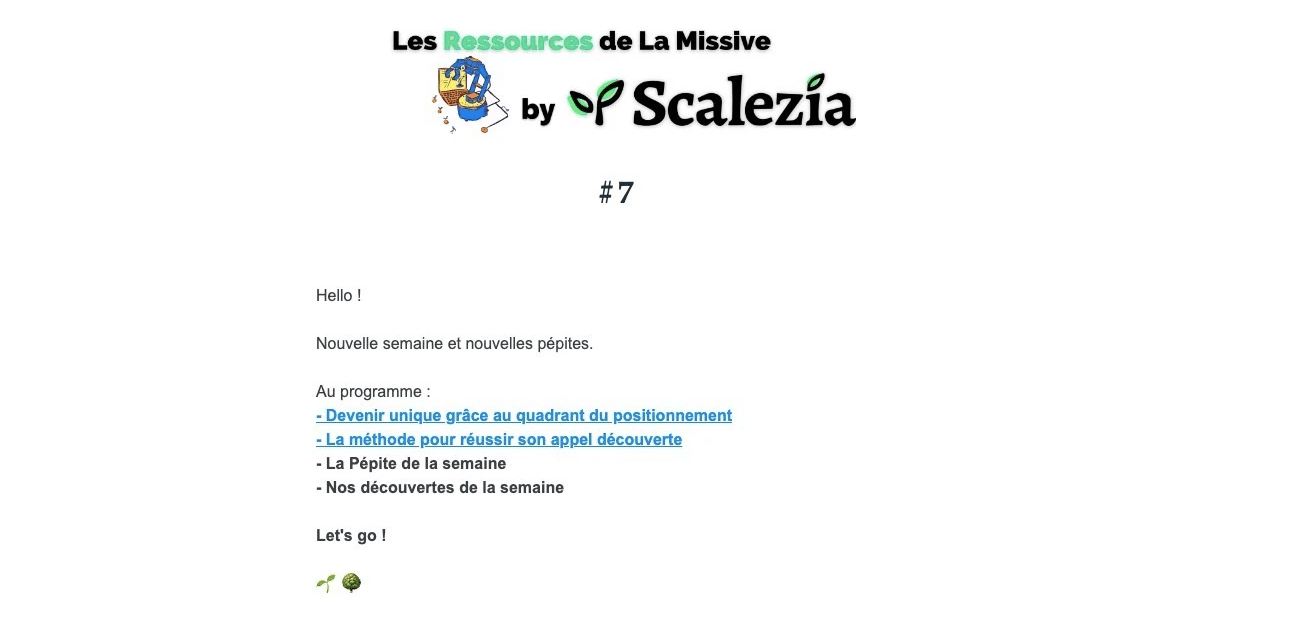
Taking this Scalezia newsletter as an example, we find
- blocks of non-sponsored content with added value for the reader (the first 2 bullet points here)
- then a sponsored paragraph (the nugget of the week)
- then native ads (the week’s discoveries)
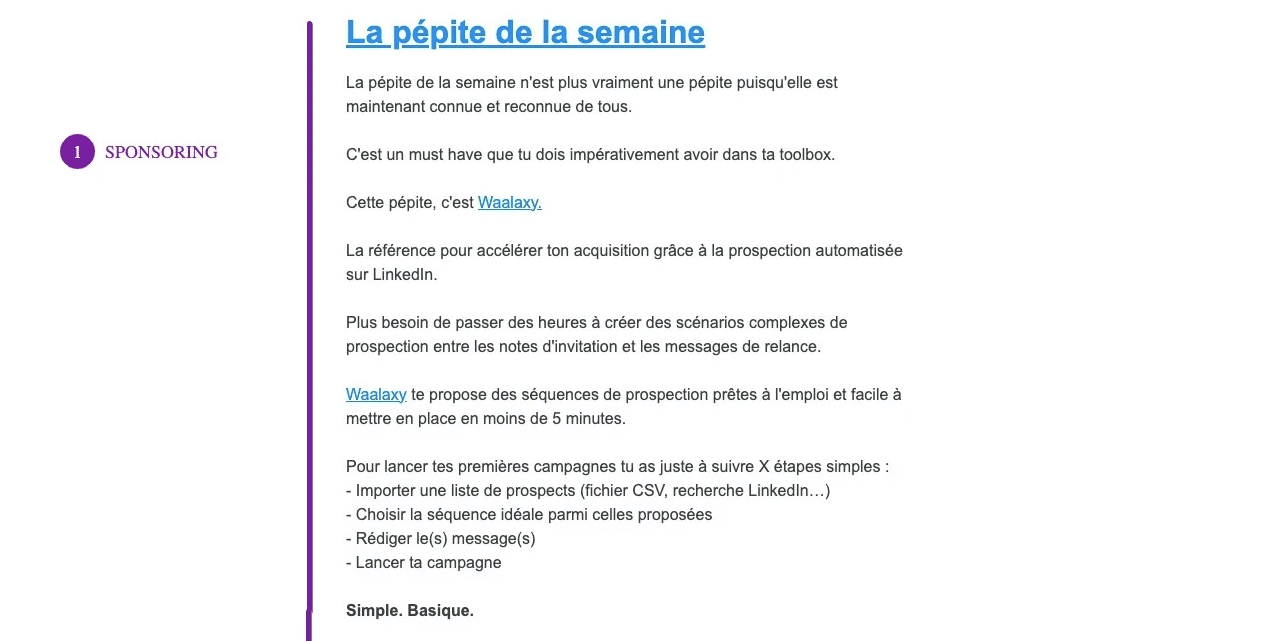
#2 Native Ads
Halfway between text and image, they are integrated into the newsletter’s editorial flow. For example, the emarketing. fr newsletter includes native ads in its selection of the week’s articles.
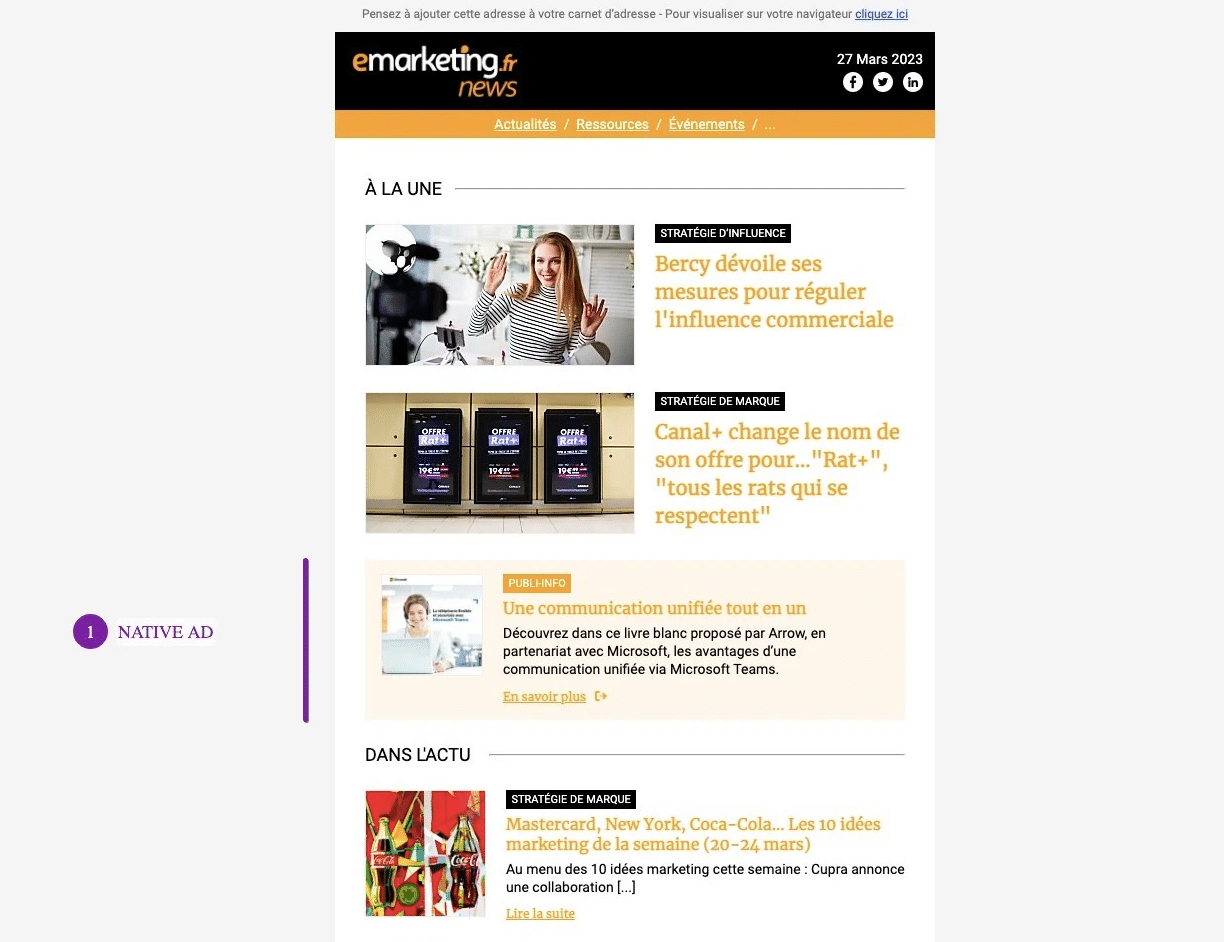
It’s an effective way of getting qualified clicks, and it’s usually much cheaper than a written paragraph, since the publisher can integrate several per newsletter.
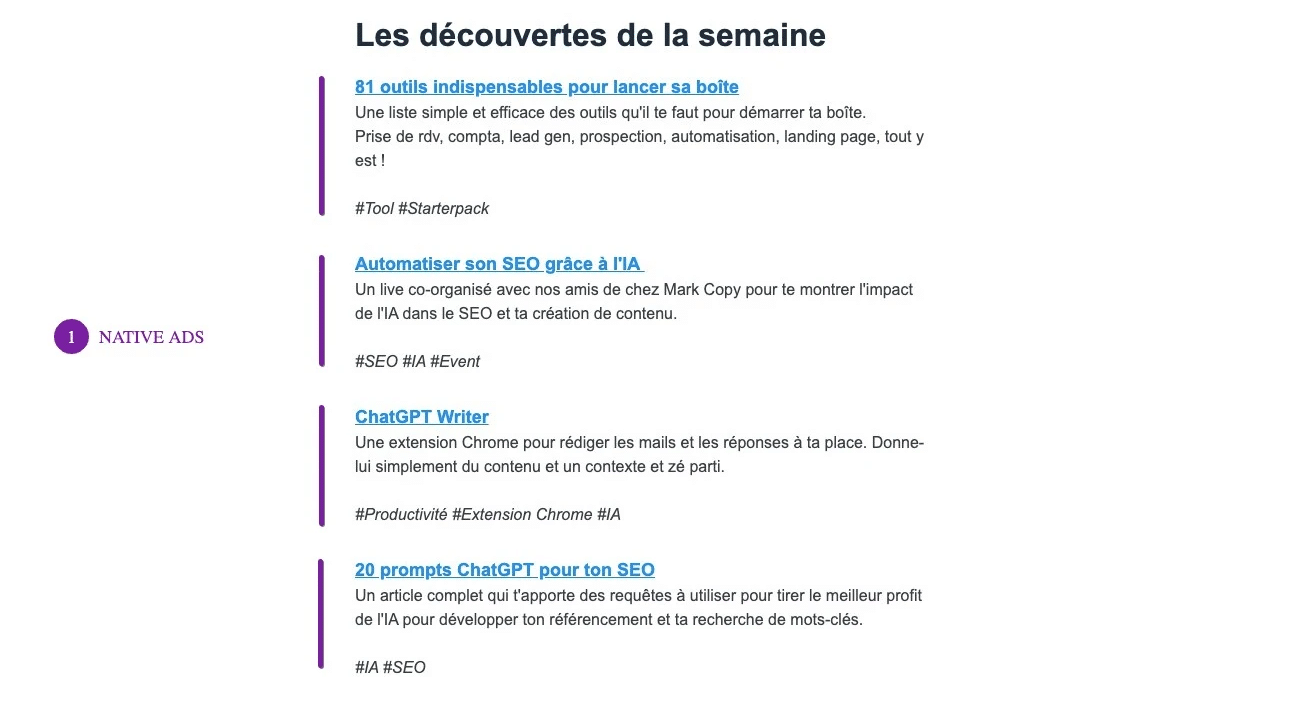
#3 The Logo
This is the least performance-oriented form of sponsorship, and the one where the publisher has the most power in the relationship with the advertiser. The advertiser “only” gets a mention – usually at the beginning of the newsletter anyway. This kind of sponsorship only really works if you want to build a brand with a very specific audience, and therefore over the long term.
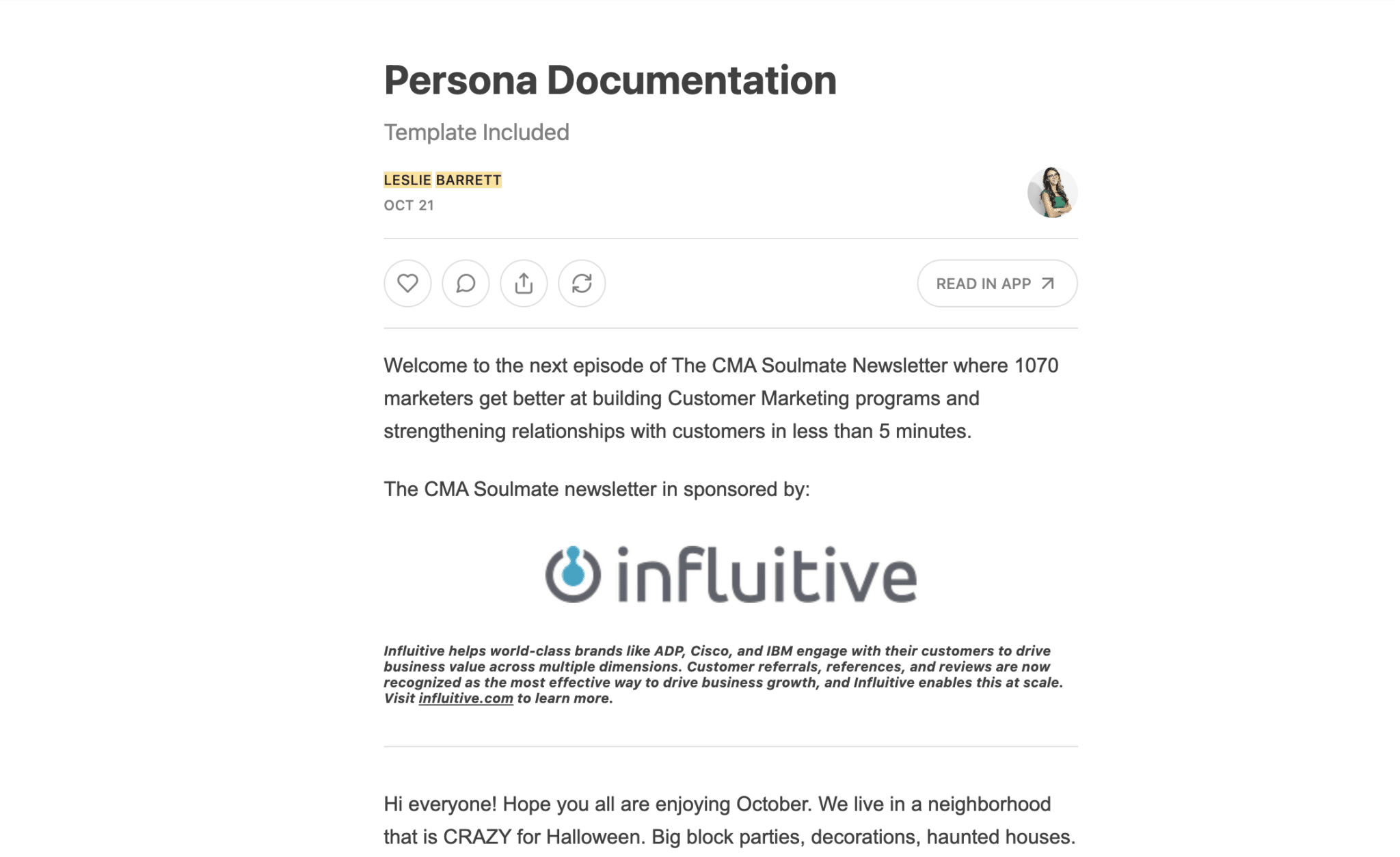
#4 Dedicated email
This is a sponsor-specific mailing sent to subscribers, which naturally offers very high visibility. For example, ComK ‘s newsletter to highlight the AI glossary with Splio CRM.
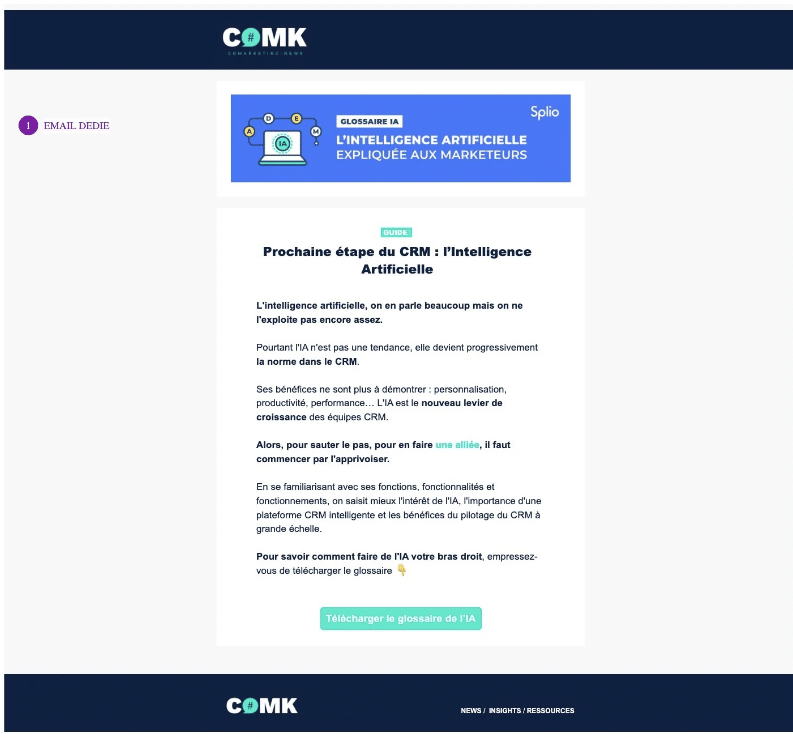
It’s up to you to define which content will help you achieve your objectives and is best suited to your target audience.
How do you measure performance?
It’s very important to monitor and evaluate the performance of your newsletters.
If you’ve chosen the direct sponsorship option, you’ll need to ask each newsletter to provide statistics after each mailing.
You can also pass on UTM parameters to the publishers of the newsletters you sponsor, so that you can track performance after clicks – with the known limitations of attribution.
The best thing to do is to define a yearly envelope to be present in all the newsletters read by your target audience. Used properly, it’s a highly effective acquisition channel.
5 good reasons to sponsor newsletters
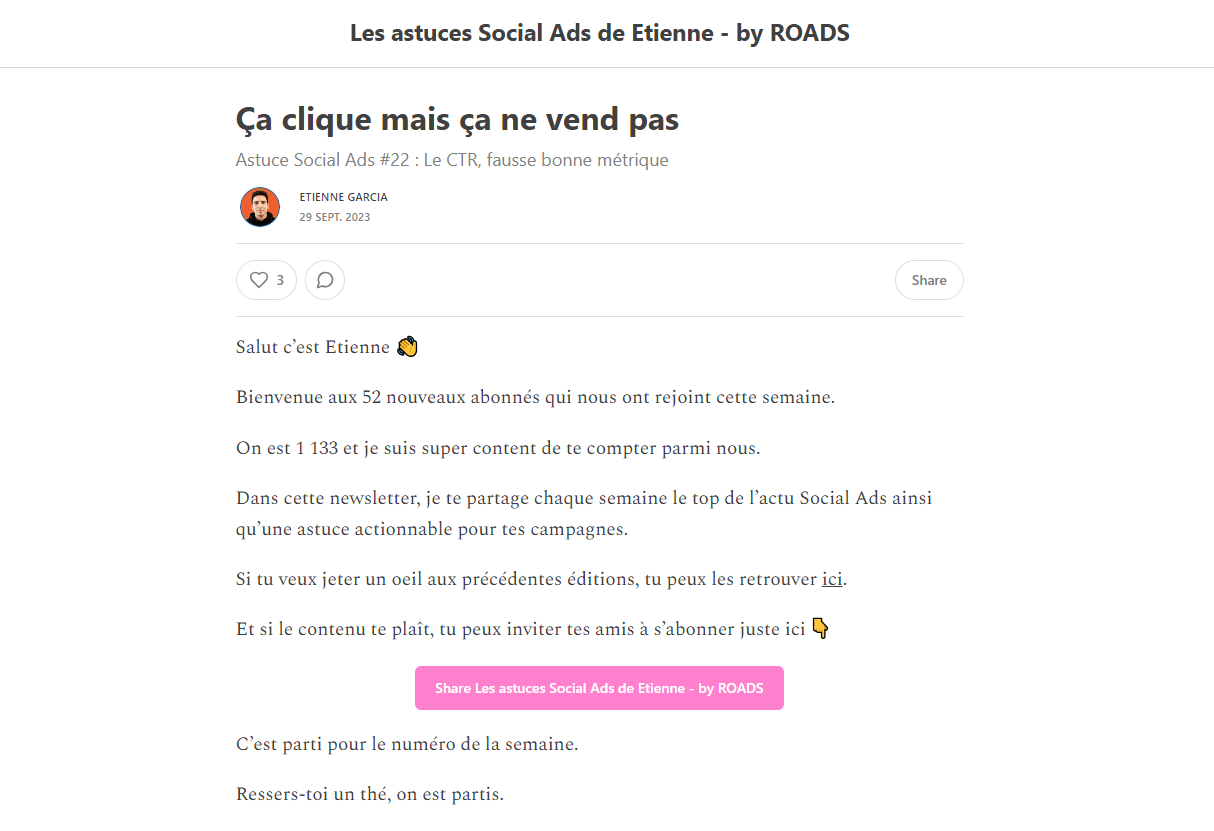
Les astuces Social Ads newsletter from Etienne Garcia, advertising agency Roads
#1 Be recommended by the content creator
On social networks, we start by following our friends. Then we extend it to other people we don’t know IRL, who become our friends by extension. What they say (especially in their newsletter) has a big impact on our habits, especially in terms of consumption.
It’s simple: on the Internet, everyone has an opinion. But our brains don’t allow us to listen to them all. That’s where influencers come in, helping us find our way around.
On the one hand, we’re guided by our own laziness: it takes time to find out about a product. Read, test, compare… Influencers do the work for us. It’s convenient, you just have to trust them.
On the other hand, if an influencer is followed by 100,000 people, it’s as if what he or she tells us is validated by 100,000 people. By following a few influencers, you feel like you’re collecting the opinions of millions.
That’s why readers trust the content creator and subscribe to his newsletter.
Being mentioned in the newsletter means benefiting from the power of recommendation. It’s one of the pillars of a good social selling strategy.
#2 Increase your audience’s repetition rate
Newsletters are still under-exploited, even though they can multiply touch points, be visible on all networks and achieve the rule of 7.
Definition
The Rule of 7 is a well-known rule in communications, which states that a prospect should hear about your brand 7 times before making a purchase: this is even truer these days, as Internet users are inundated with messages and solicitations.
But repeating the same message, on the same network, is just rehash for those Internet users who have access to an unlimited source of new content. Worse still, you run the risk of ad fatigue, i.e. your ad losing effectiveness because it’s been seen too much by users.
Today, to respect the rule of 7, web users need to see the same message 7 times, on different channels. Hence the value of a recommendation via a well-crafted newsletter.
#3 Reach new audiences
Acquisition channels are limited, especially for paid: SEA / Social Ads / Affiliation. The choice of channels is quickly limited. And even on one channel, ROI is inversely exponential.
Newsletter sponsorship opens up a new acquisition channel.
If we take the B2B Marketing target, for example, there are the best-known and largest newsletters (BDM, Siècle Digital, Frenchweb, Maddyness, etc.), but there are also a multitude of other marketing communities who read highly targeted newsletters such as Audrey Tips, Scalezia, LePtitDigital, Kick Ads, Roads and many others.
#4 Easily reach target communities
Let’s take the example of a company that wants to reach investors.
Usually, she’ll create a profile of her target: male, 30-65 years old, CSP+, urban, etc.
Then it will select these criteria for the targeting of its Social Ads, hoping to have hit the nail on the head.
With DMPs, we’ll try to find and track these criteria to display on websites (even if it’s increasingly complicated with the RGPD).
With newsletter sponsorship, it’s simple and straightforward: investors are those who read Snowball, Tout sur mes Finances, Café de la bourse, Filite, or Epinard for those who follow impact finance.
#5 Generate strong commitment
We were talking about laziness just above.
Not only a newsletter, but recommendations that arrive directly in our inbox, without the need to search.
What’s more, we have a special bond with our mailbox: it’s a bit like home. This makes for much less aggressive creative than on display or social networks, and a much finer, more accurate message.

